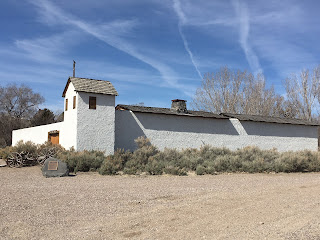(
Information taken from Kingman Arizona Historic District)
The
Armour and Jacobson Building was built in 1921 as store fronts on the lower level and office buildings above. E.E. Armour was a baker. Robert Jacobson was a mining engineer.
 |
| 426-430 East Beale |
Next door to the Armour and Jacobson Building is the Gruninger Building. The Gruninger Building was constructed in 1921 as an investment property by Gruninger and Sons. They had their offices upstairs while downstairs was available to retail.
 |
| 424 East Beale |
This building has four murals on the side. They honor the Hualapai Tribe, Kingman, Arizona and Mohave county
Masonic Temple was built in 1939. It was a WPA project.
 |
| 212 North Fourth |
The V
an Marter Building sits opposite the street of the Armour and Jacobson Building. It was built in 1921 for the Van Marter enterprises which included mortician, grave stones, music, shoe shop and office space. Today it houses an antique shop.
 |
| 423-27 East Beale |
Central Commercial Company Building was completed in 1917 and became the commercial center of Kingman as he company had furniture, lumber, hardware, auto parts, groceries, clothes, farming and ranch supplies and more. It remained vibrant until the I-40 bypass. The building now houses several businesses including a church.
 |
| Corner Andy Devine and Fourth |
The J.C. Penney building was not built until the 1950s. With the I-40 bypass completed in 1978, J.C. Penney moved to Stockton Hill Road in a strip mall. The building is now occupied by Beale Street Celebrations.
 |
| Corner Beal and Fourth |
State Theater was constructed in 1939 as a movie theater. It was hurt with the I-40 bypassing the area, but still survived. Another theater built in town in 1983 and the theater closed soon after. It is now being restored as a live theater by the Kingman Arts Council.
 |
| Theater 304 Beale |
 |
| Mural on back of theater |
Old Red School House is on Fourth Street and now houses a court. It was the first permanent school in Kingman erected 1895-96.
The original Kingman post office is across the street from the Red School. It is used for city government.
The American Legion, located on Oaks, is in a building that was originally a movie theater for the Kingman Army Air Field. The building was relocated to where it is currently.



























































